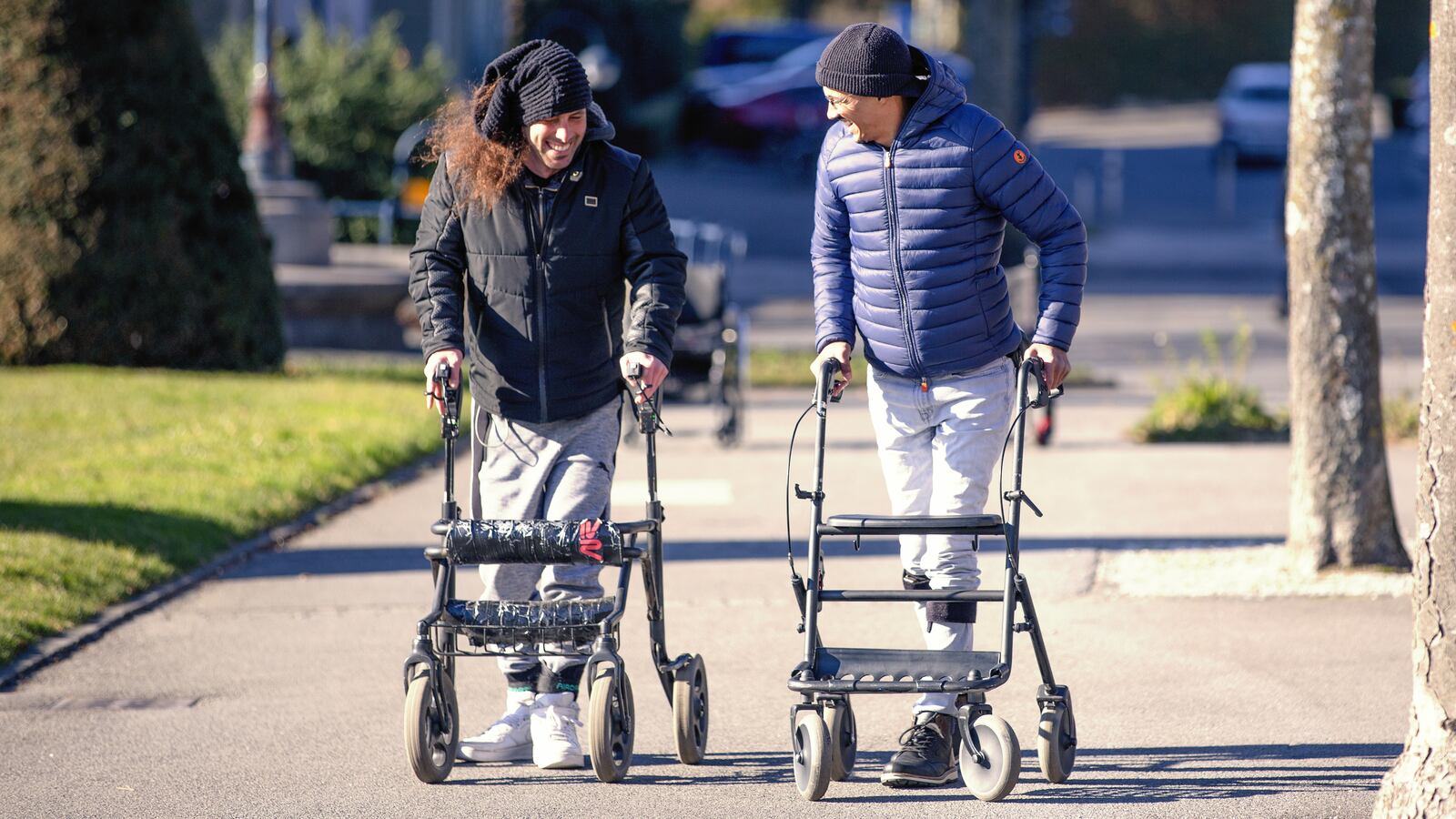For years now, researchers from the Swiss Federal Institute of Technology (EPFL) in Lausanne have been working on a groundbreaking approach to reverse paralysis in people with spinal cord injuries, by reactivating dormant neurons with electrical stimulation.
The treatment has now taken a massive leap forward, thanks to new findings published in Nature Medicine in which vertebrae implants restored the ability to walk and move around in three paralyzed patients—all in just a matter of hours.
“All three patients were able to stand, walk, pedal, swim and control their torso movements in just one day, after their implants were activated,” Grégoire Courtine, a neuroscientist at EPFL and senior author of the new study, said in a press release.
Past versions of the implants have successfully helped paralyzed patients to some extent. But the newest versions tested in this study utilize an AI-powered software that automatically applies stimulation in specific ways based on the patient’s own injury as well as what kind of physical activity they’re looking to do.
That opens up a wider range of possible movements. Each of the three patients were able to not just walk around, but also cycle around in a moving vehicle and swim in the water. All patients have to do is select a desired activity from a tablet, and a pacemaker in the abdomen will relay signals that let the implants know which neurons in what regions of the spine need to be stimulated so the legs and body can move accordingly.

One patient learned to cycle after five months of rehabilitation with the implants.
Courtesy EPFLOne of the patients, Michel Roccati, an Italian man paralyzed from a motorcycle accident, described using the implants with the aid of a walker to take his first steps forward in four years.
“The first few steps were incredible—a dream come true,” he said in a press release. “I can now go up and down stairs, and I hope to be able to walk one kilometer by this spring.”

Grégoire Courtine.
Courtesy EPFLA great deal more testing among a larger group of participants is needed to fully demonstrate how effective the implants are in reversing paralysis. Courtine and his colleagues will also need to improve the AI software so it’s able to treat a more diverse range of injuries as well.
But so far, the fast action of the implants has changed the lives of the three patients overnight, and has enabled rapid progress in regaining muscle mass and independent movement over just a few months. The ultimate goal is to use this technology to fully rehabilitate patients so the injuries are fully healed and the implants are no longer needed. For now, things are moving in a very encouraging direction.






